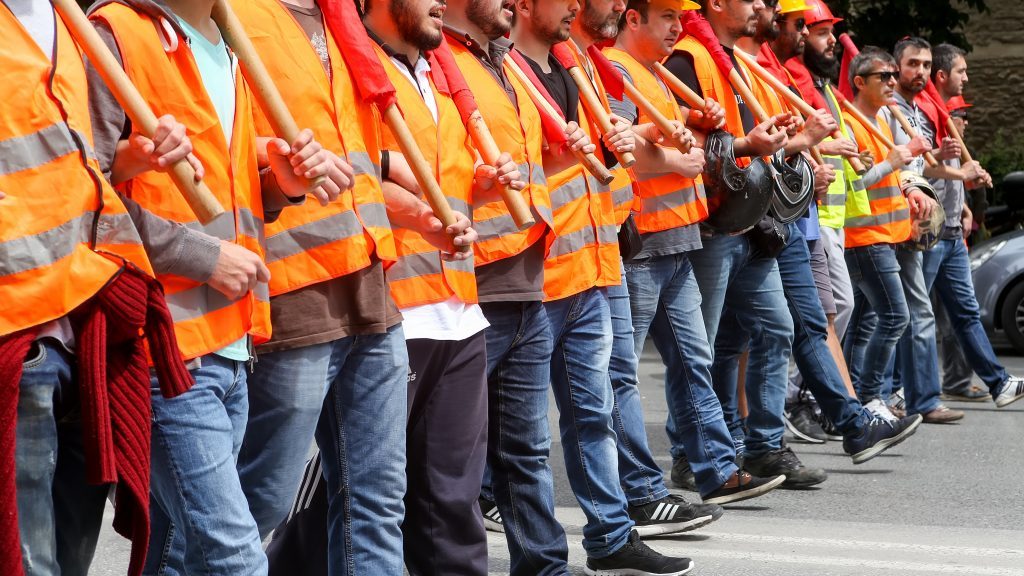According to a new report on serious injuries and fatalities (SIFs) in the workplace, 2022 saw a drastic increase in the number of fatalities.
It also noted, sprains, strains and tears were the number one incidents reported by contractors.
The report was released by ISN, a global company that specializes in contractor and supplier information management and focussed on U.S. contractors.
“The goal was to really look at serious injuries and fatalities and share back trends and insights with the public in hopes that this will allow companies and individuals to look at what their workforce is doing and maybe take away some opportunities to either evaluate their data in a way that is significant to them and/or add any mitigation strategies that will hopefully target those events that are resulting in life-altering injuries,” said Katie McLaughlin, senior team lead at ISN.
The top three causes for the fatalities included contact with objects or equipment (55 per cent); trips, slips and falls (21 per cent); and overexertion and bodily reaction (13 per cent).
The oil and gas sector recorded the highest fatality rate of all of the industries evaluated.
“If you look at the trends in safety in general we’ve seen a decrease in general incident rates over the last 20 or 30 years, but if you look at the serious injuries and fatalities, the life-altering, life-threatening injuries, we’ve really seen a pretty steady rate there,” McLaughlin noted.
For the most recent edition of the white paper, ISN added 2022 data to its previous five-year analysis of SIFs. It leveraged its platform data from contractors in its database to analyze more than 127,000 recordable incidents that occurred at contractor companies from 2017 to 2022.
“The ISN database represents contractors in about 26 different industries,” McLaughlin explained. “For this dataset what we’ve done is we’ve focused on U.S. contractors specifically because they have the OSHA (Occupational Safety and Health Administration) logs that they are reporting and submitting to our ISNetworld database. From there we’ve narrowed that dataset of contractors to those that have reported a serious injury or fatality.”
Another one of the key findings from the white paper was that the COVID-19 pandemic had an impact on the data in 2021 and in 2022, sprains, strains and tears returned as the number one incident type reported by contractors from all industries, replacing fractures and dislocations. This can be correlated with an aging workforce, the report suggests.
“We really felt like 2022 showed a stabilization of cases and statistics returning to pre-pandemic levels,” said McLaughlin. “Obviously 2020 and into 2021 were a little bit of an anomaly year for a lot of different reasons but things kind of stabilized back to the 2019 dataset.”
The analysis also revealed the COVID-19 outbreak in 2020 resulted in elevated hospitalization cases despite the downturn in work activity.
It also found the highest rate of fatalities is not correlated with the largest company size, but rather mid-size corporations.
This year, ISN also looked at the average number of days away from work.
“Transportation averaged 95 days away per case which is really surprising to us, but I think speaks to the severity of injuries impacting the individuals in that industry,” McLaughlin said.
ISN strongly believes what gets measured gets done.
“Ultimately the data shows that there is a positive correlation between what gets measured and the impact to overall injury rates,” she stated.
“Over the years we’ve done webinars and things to help educate on what a serious injury is, how you define it, how you qualify it and how you report on it etc.
“We’ve seen an uptick in reporting, but as we continue to look at this our hope is that we can help share these trends for specifically those companies that maybe don’t have a dedicated health and safety team, that don’t have software that tracks all of their incident information. If this gives them some ideas of ways to look at their data, ways to highlight factors or causes of risks in their workplaces that may result in a serious injury and helps them prioritize their mitigation strategies and their resources to have the most impact in reducing serious injuries, that would be our goal.”
Follow the author on Twitter @DCN_Angela



Recent Comments